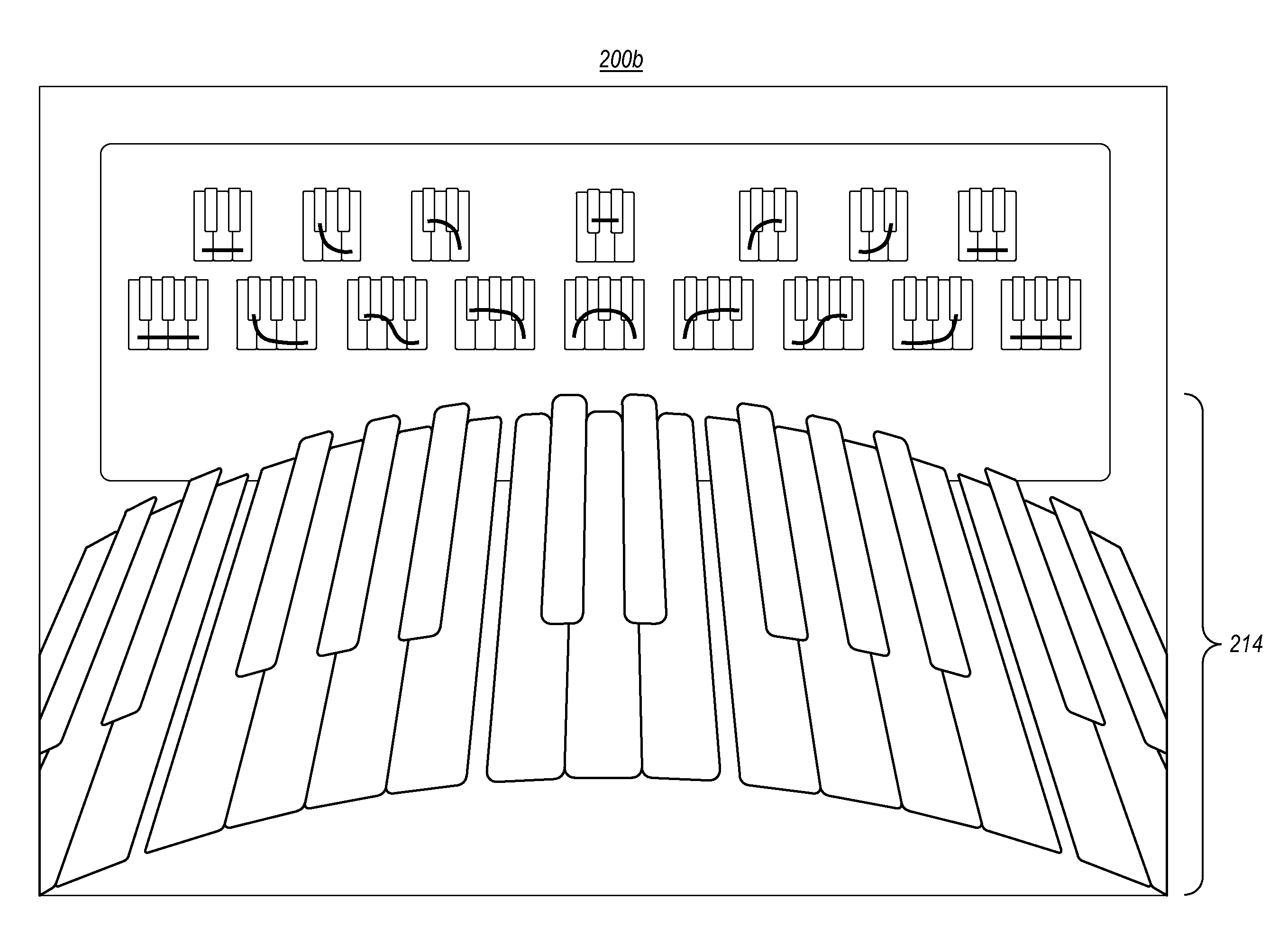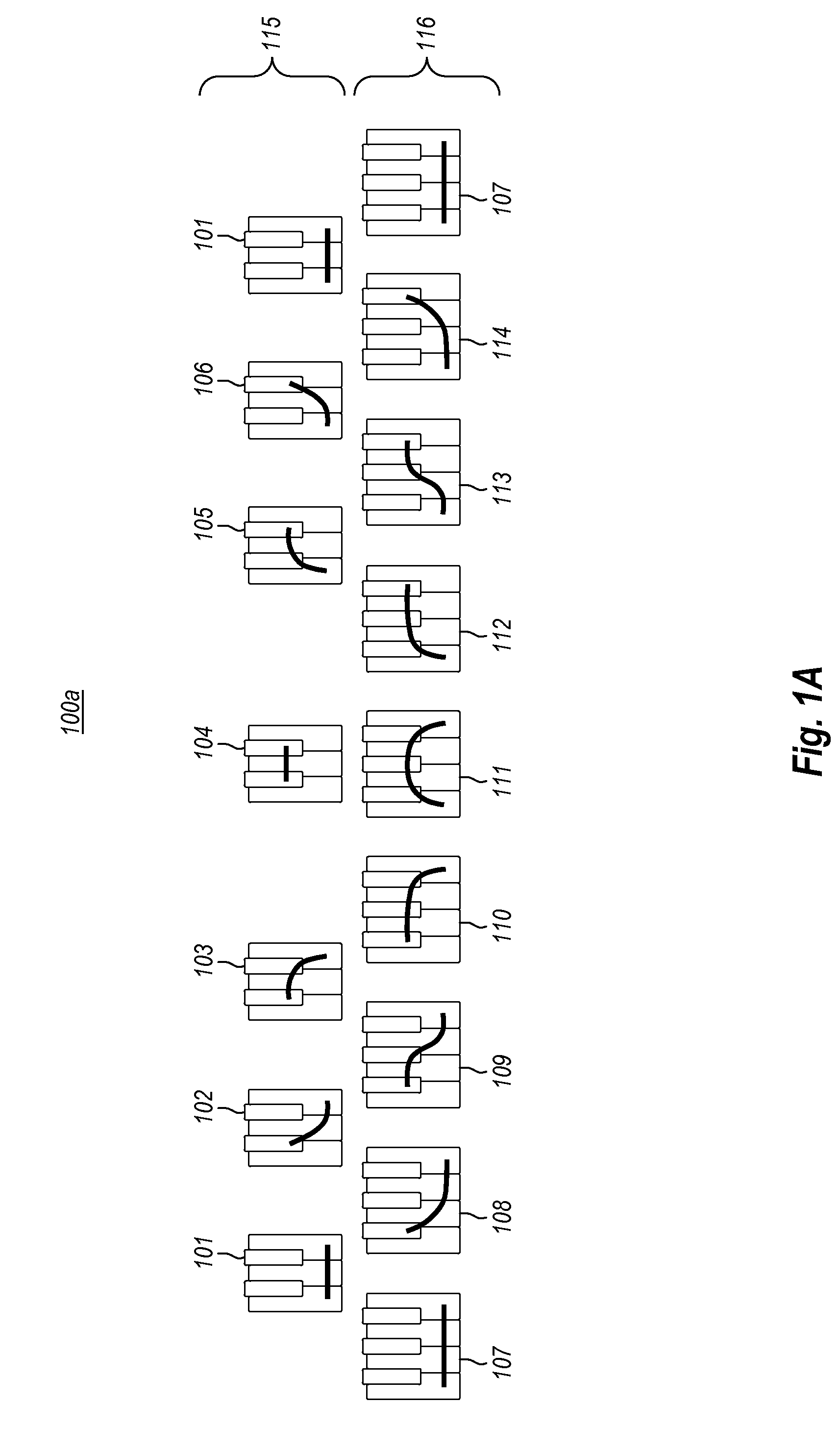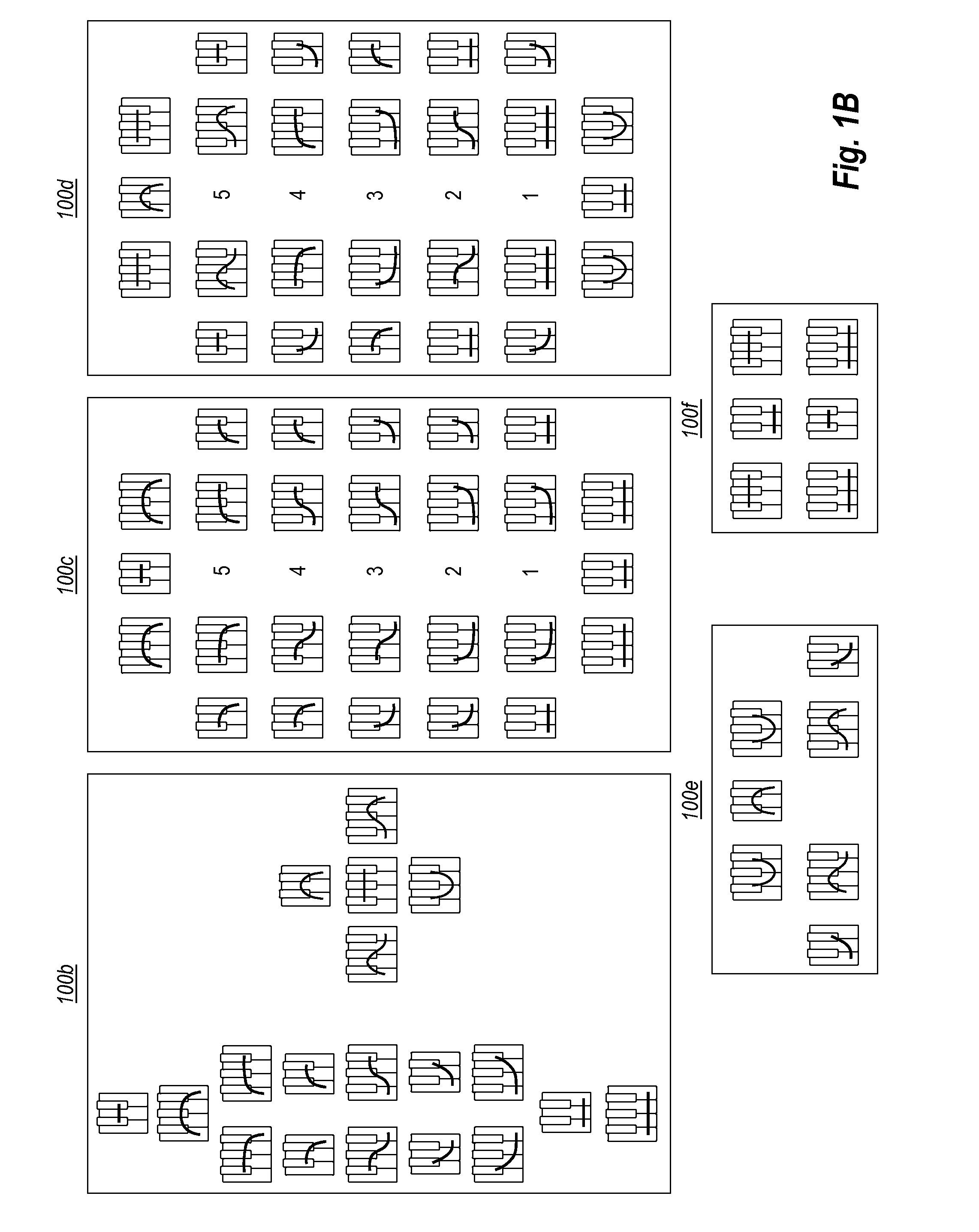Musical learning and interaction through shapes
a technology of learning and interaction, applied in the field of music learning and interaction through shapes, can solve the problems of insufficient conventional musical education for a large proportion of students, inability to understand musical concepts aurally, frustration, disinterest, etc., and achieve the effect of quick organization, memory, and interaction
- Summary
- Abstract
- Description
- Claims
- Application Information
AI Technical Summary
Benefits of technology
Problems solved by technology
Method used
Image
Examples
Embodiment Construction
[0029]The present invention extends to methods, systems, and computer program products for musical learning and interaction through shapes. Shapes are a system for enabling musical interaction and refining musical awareness that enables students to quickly organize, remember, and interact with the broadest tonal contexts in music, as defined by implicit (i.e., naturally acquired) tonal knowledge. A shape is a device for representing the tonal context of a musical selection without reference to a tonal center, and without implied reference to any other tonal context. Shapes thereby enable users to interact directly with a song or musical selection, at the most readily perceptible level of tonal context, and without regard, at first, to standard musical notation (e.g., names or symbols).
[0030]In some embodiments, a method for presenting a music lesson includes presenting one or more key groupings (shapes) at a display device. Each key grouping represents a group of notes that are with...
PUM
 Login to View More
Login to View More Abstract
Description
Claims
Application Information
 Login to View More
Login to View More - R&D
- Intellectual Property
- Life Sciences
- Materials
- Tech Scout
- Unparalleled Data Quality
- Higher Quality Content
- 60% Fewer Hallucinations
Browse by: Latest US Patents, China's latest patents, Technical Efficacy Thesaurus, Application Domain, Technology Topic, Popular Technical Reports.
© 2025 PatSnap. All rights reserved.Legal|Privacy policy|Modern Slavery Act Transparency Statement|Sitemap|About US| Contact US: help@patsnap.com



